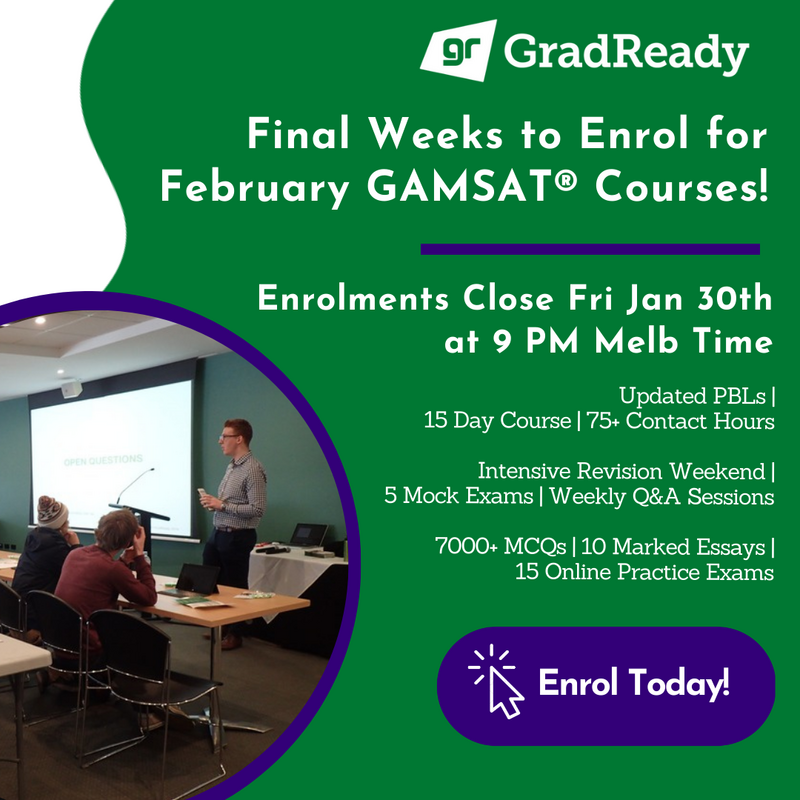If you’re reading this, chances are that you’re quite keen on studying medicine and becoming a doctor. However, the details of what this entails–what it is like to attend medical school and work towards that goal–may be somewhat hazy, especially if you’re the first in your family to enter the medical profession. As I am nearing the end of my medical school years, I believe I am in a good position to introduce you to the pathways to medicine: occasionally bizarre, often challenging, and always fascinating.
Note: The following is about studying medicine in an Australian medical school and may not be representative of medical school experiences in other countries.
Studying Medicine: The People
The Good: You can meet some amazing people from many walks of life.
The Bad: It can be easy to feel inferior when surrounded by so many high achievers.
One of the greatest assets of postgraduate medical courses, in my not-at-all-biased opinion, is the diversity of the student body. Everyone entering a postgraduate medical course will have had to have done an undergraduate course first. While it’s likely that most of your peers will have done relevant courses, such as biomedical science, you will also meet holders of degrees in mathematics, fine arts, chemistry, and so on. You’ll also get to meet mature age medical students who have come to the course seeking a change in career, and you’ll be able to learn a lot from their past lives working as nurses, pharmacists, teachers, electricians, and so on.
As you well know, medicine is a competitive degree to get into, and so everyone who makes the cut is, by definition, a high achiever. Furthermore, I’ve found that many of my peers do not just excel academically, but in other arenas too, such as music or athletics (I’ve met a medical student who once competed on Australian Ninja Warrior, for instance). For many people, entering medical school can require some adjustment from being one of the top students, to being just a random student, and you may need to remind yourself constantly that even if you’re sitting at or near the bottom of the class, you still did well to make it into med school.
Studying Medicine: The Content
The Good: The content is interesting and relevant, particularly in clinical years.
The Bad: Some of the pre-clinical content can be a bit of a slog due to lack of direct relevance. (Biochemistry, I’m looking at you…)
The human body is innately interesting. There is so much complexity and so much that can go wrong, yet so much of it goes right most of the time. In your preclinical years, you’ll learn about how the tiny molecules in our body work together to make us, about how the structures of the body fit together and function, and about different classes of medications and how they work. You’ll also go on to learn about how to take a history and examine the body for signs of health and illness, and then you’ll go into the hospitals to see real patients with real illnesses. For those of you with a biomedical science background (such as myself), it is very exciting to finally see a real-world application to all that knowledge.
On the other hand, sometimes the pre-clinical years can be a bit of a slog. Sitting in lecture theatres, scribbling down notes while a lecturer talks at you, it can be hard to see the relevance of the Krebs cycle to being a doctor. Even learning the physiology of how the heart beats can feel pretty dry if there are no patients to apply this knowledge to. Unfortunately, the boring parts of studying medicine are needed to lay a foundation for the interesting parts.
The Good: A lot of learning in medical school is self-directed, which can be good if traditional lecture-style learning doesn’t work for you.
The Bad: It can be hard to know where and how to focus your study.
Medical schools vary somewhat in how the content is structured and taught, but for the most part, clinical years rely a lot on self-study. There will be lectures and tutorials, yes, but there likely won’t be a lecture and/or tutorial on everything that you need to know, so you’ll need to fill in the gaps yourself. You may choose to do this from textbooks, or, if you’re like me, from random American students’ flashcard decks found online. It’s up to you.
If you don’t learn well from the traditional lecture format and prefer to be able to dive into topics that interest you, this can be great news, as it’ll allow you the freedom to study when and how you please. However, if you’re the type who likes more direction, you may find this difficult. Your university will hopefully give you some guidance on what you should study. My university provides all students with lists of “Core Conditions” and “Core Presentations,” for example, but you’ll still have to go out and find the information yourself and learn it in a way that works for you. For further information about each specific medical school in Australia, visit the Australian Medical Schools Guide.
Studying Medicine: Clinical Placements
The Good: Being in hospitals and applying your knowledge and skills to a real-world setting.
The Bad: It can be hard to know what your role is as a medical student.
After a year or two (depending on your university) of pre-clinical learning, the clinical space feels like the Promised Land. After learning about the theory of medical conditions, and how to perform clinical examinations on your classmates, you’ll be able to put that knowledge and skillset to the test on real patients with real illnesses!
You’ll find, however, that it’s not all roses. It can be very hard to know what your role is as a medical student, including where you are supposed to be and what you are supposed to be doing. Every team is different. Some doctors will expect students to stay around and get actively involved, whereas other doctors will barely acknowledge the students’ existence. Your involvement may also vary depending on the rotation and on the doctors involved. For example, when I did my GP placement in 2020, I was placed with a doctor who liked to cut out skin lesions, so I got to assist and practice suturing. My preceptor also let me do a history and exam on patients before handing over to him, so I got to practice my consultation skills. One of my classmates, on the other hand, was placed with a doctor who was quite worried about COVID, so he (my classmate) was relegated to a corner and was not permitted to go near the patients (he was only allowed to observe).
It can also be hard to know how to manage your time once on rotation, since you’ll still have to study. As mentioned previously, studying during clinical years is largely self-study, so you won’t be attending as many scheduled classes during your pre-clinical years. However, you will have to figure out for yourself how best to divide your time between seeing patients in the hospital and brushing up on the theory so that you can understand what is going on (and so that you can prepare for your exams).
The Good: Having the privilege of hearing patients’ stories and being involved in their care.
The Bad: You are frequently reminded that being human is not all sunshine and rainbows.
Medicine is a very intimate profession, in that we have the privilege of meeting people during some of the worst moments of their lives. You will find yourself privy to stories that patients wouldn’t tell anyone outside of the medical field; in some cases, the patient might tell you, the student, one of their darkest secrets before they tell the doctor. You will have front-row seats to patients’ triumphs, their failures, their joys, their sorrows. It truly is a privilege, and one that I hope you will not take lightly.
Being so close to the action means that you will also be exposed to some challenging situations. I don’t just mean death, though that is certainly something that you will see. The only certainty in medicine, after all, is death. You will also have the misfortune of witnessing cases of child abuse, sexual abuse, domestic violence, drug addiction, and more. You will also have the misfortune of observing a system that is unfortunately, despite the Herculean efforts of its workers, unable to fix all of society’s ills. You will go home and weep that you were unable to offer any closure to the distressed patient with a likely miscarriage, but soon will come a time when you will see the child with a head injury walk again, and you will remember why you chose to study medicine.
Conclusion
Like any other field, medicine has its pros and its cons. It also has its own unique culture that may be difficult to appreciate from the outside, particularly if you don’t have any family members in the field. I hope that my blog post has given you an idea of what it’s like to be a medical student, warts and all. While studying medicine can be a rewarding and challenging field, I think it is very important to have an idea of what you’re about to get yourself into.
The decision to step into the lives of others is not a decision to be taken lightly. If you want to learn more about the life of a medical student to see if studying medicine is really the correct pathway for you, check out GradReady’s GAMSAT To Med School Podcast, where expert GAMSAT tutors and current medical students discuss topics ranging from preparing for the GAMSAT to med school interviews to life as a medical student!






